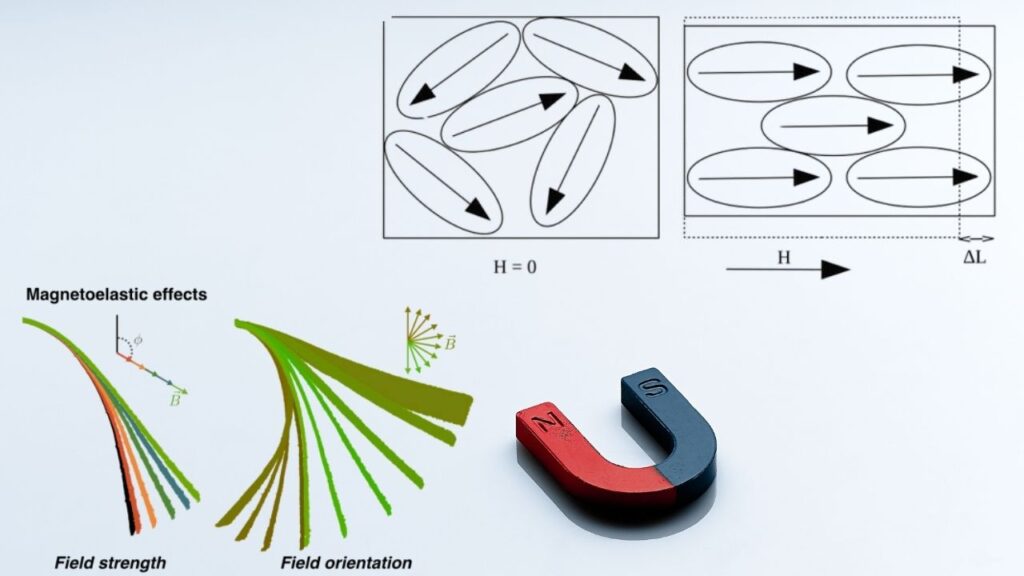Quantum materials are revolutionizing science and technology in 2025, marking a pivotal year for breakthroughs that promise to reshape computing, energy, and data storage. This article explores what quantum materials are, why they matter, and how recent discoveries are setting the stage for a new era in technology. Whether you’re a curious beginner or a seasoned professional, this guide breaks down complex concepts into clear, actionable insights.

What Are Quantum Materials?
Quantum materials are special substances whose properties are governed by the strange and fascinating rules of quantum mechanics—the physics of the very small, like atoms and electrons. Unlike ordinary materials, quantum materials exhibit unique behaviors such as superconductivity (zero electrical resistance), magnetoelastic effects (interaction between magnetism and structure), and topological states that can be harnessed for advanced technologies.
In 2025, scientists have made remarkable progress in understanding and controlling these materials, confirming theories nearly 100 years old and unlocking new possibilities for practical applications.
Quantum Materials
| Aspect | Details |
|---|---|
| Breakthrough Discovery | Precise control of magnetism at the atomic scale, confirming the Bethe-Slater curve predictions |
| Applications | Quantum computing, data storage, energy conversion, spintronics, and fault-tolerant devices |
| Global Recognition | 2025 declared International Year of Quantum Science and Technology by the United Nations |
| Research Leaders | Universities of St Andrews, Oxford, Cambridge, Manchester, UCC, and others |
| Technological Impact | Development of scalable quantum processors and new quantum visualization tools |
| Official Resource | International Year of Quantum Science and Technology 2025 |
Quantum materials are the discovery of the year for 2025 because they unlock a century-old mystery and pave the way for groundbreaking technologies. From confirming fundamental physics to enabling practical quantum devices, these materials are at the frontier of science and engineering. The collaborative, interdisciplinary research efforts worldwide are accelerating progress, promising a future where quantum technologies become integral to everyday life.
Why Are Quantum Materials the Discovery of the Year?
Confirming a Century-Old Prediction
A team at the University of St Andrews recently achieved a milestone by measuring magnetoelastic effects in complex quantum materials with unprecedented precision.

Their work confirmed the Bethe-Slater curve, a fundamental theory from the 1930s describing how magnetic properties depend on atomic distances. This breakthrough not only validates long-standing physics but also reveals that these effects are much stronger than previously thought, opening new avenues for material design.
Enabling Next-Generation Technologies
Quantum materials are the backbone of emerging technologies like quantum computing, which promises to solve problems beyond the reach of classical computers. For example, researchers have developed new tools to identify materials suitable for fault-tolerant quantum processors, a critical step toward scalable quantum computers. Microsoft’s recent launch of the Majorana 1 quantum processing unit, powered by topological quantum materials, exemplifies this progress.

Interdisciplinary Collaboration
Advancing quantum materials requires teamwork across physics, chemistry, materials science, and engineering. This collaborative approach is accelerating discoveries, from synthesizing new materials to developing theoretical models that explain their complex behaviors.
Practical Guide: Understanding and Applying Quantum Materials
1. Basics of Quantum Materials
- Quantum States: Atoms and electrons can exist in multiple states simultaneously (superposition) and be linked across distances (entanglement).
- Topological Properties: Some quantum materials have surface states protected by topology, making them robust against disturbances.
- Magnetoelastic Coupling: Interaction between magnetic order and crystal structure affects material properties.
2. Key Types of Quantum Materials
- Topological Insulators: Conduct electricity on the surface but act as insulators inside.
- Superconductors: Conduct electricity without resistance at low temperatures.
- Spintronic Materials: Use electron spin rather than charge for data storage and transfer.
3. Applications in Technology

- Quantum Computing: Quantum materials enable robust qubits and gates for error-resistant quantum processors.
- Data Storage: Magnetoelastic effects could lead to revolutionary ways to read and write magnetic data electronically.
- Energy Storage and Conversion: Quantum materials improve solar cells and batteries by enhancing efficiency and capacity.
4. How Scientists Study Quantum Materials
- Nanoscale Probing: Using advanced microscopes and spectroscopy to observe atomic-scale phenomena.
- Material Synthesis: Creating high-quality crystals and thin films with precise control.
- Theoretical Modeling: Developing mathematical models to predict and explain behaviors.
5. Future Directions
- Discovering New Materials: Searching for materials with unique quantum properties.
- Scalable Quantum Devices: Building larger, more stable quantum processors.

- Interdisciplinary Research: Combining physics, chemistry, and engineering to innovate.
Real-World Example: Magnetoelastic Coupling Breakthrough
Dr. Carolina Marques and her team at the University of St Andrews demonstrated the ability to control magnetization at the surface of a quantum material independently from its bulk. They detected tiny structural changes with sub-picometer resolution—one picometer is 1/100th the radius of an atom. This precision could revolutionize data storage by enabling new electronic methods to read magnetic states, potentially leading to faster, more efficient memory devices.
Scientists Discover Why Symmetrical Crystals Absorb Light Unevenly
Intelligent Sensors Reduce Energy Use in Industrial Settings
Neural Networks Improve Efficiency of Solid-State Battery Research
FAQs About Quantum Materials
Q1: What makes quantum materials different from regular materials?
Quantum materials exhibit properties governed by quantum mechanics, such as superposition and entanglement, leading to behaviors not seen in classical materials.
Q2: How do quantum materials impact everyday technology?
They are key to developing quantum computers, improving energy storage devices, and creating ultra-efficient electronics that could transform industries.
Q3: Are quantum materials only useful at very low temperatures?
Many quantum materials require low temperatures, but research is ongoing to find or engineer materials that work at higher, more practical temperatures.
Q4: How can I learn more or get involved in quantum materials research?
Following developments from leading universities and organizations like the International Year of Quantum Science and Technology (IYQ 2025) is a good start. Many institutions offer courses and workshops.
Q5: What industries will benefit most from quantum materials?
Computing, telecommunications, energy, healthcare, and manufacturing are among the sectors poised for transformation.






